Was trying to use telnetlib to help me play TradeWars on an old-school BBS.
As I recall (this was 30+ years ago) BBS's used some kind of extended ASCII and/or something called ANSI. Made for colorful text and some simple graphics, like edges, corners, etc.
A generic telnet terminal, like gnu telnet, cannot render these sites correctly.
 SyncTerm (ancient software) kind of runs on my mac and does display the text and graphics properly.
SyncTerm (ancient software) kind of runs on my mac and does display the text and graphics properly.

My problem is that telnetlib.read_until() returns bytes which i am unable to decode into something readable.
a fragment of my login reading/writing:
print (tt.read_until("Show today's log?".encode('ascii')),3)
tt.write('\r\n'.encode('ascii'))
print (tt.read_until('[Pause]'.encode('ascii')),3)
tt.write('\r\n'.encode('ascii'))
print (tt.read_until('Password?'.encode('ascii')),3)
tt.write('NOTMYPASSWORD\r\n'.encode('ascii'))
zaa = tt.read_until('[Pause]'.encode('ascii'))
print(zaa)
tt.write('\r\n'.encode('ascii'))
read_until() is giving me bytes.
print (type(zaa)) zaa.decode('utf-8')
<class 'bytes'> ' ****\r\x1b[0m\n\r\n\x1b[1;33mYou have been on today.\r\x1b[0m\n\x1b[32mSearching for messages received since your last time on\x1b[1;33m:\r\x1b[0m\n\x1b[32mNo messages received.\r\x1b[0m\n\x1b[35m[Pause]'
But I don't know how to decode them into something nicer to read, or at least just strip out all the awful color-control codes or whatever they are.
Any advice on how to parse this nicely?
Thanks
==========
Here is what I've come up with for now. But still wondering if there are better solutions.
def de_ansi(somebytes):
#https://stackoverflow.com/questions/13506033/filtering-out-ansi-escape-sequences
#https://stackoverflow.com/questions/14693701/how-can-i-remove-the-ansi-escape-sequences-from-a-string-in-python
ansi_escape = re.compile(r'\x1B\[[0-?]*[ -/]*[@-~]')
text = ansi_escape.sub('', somebytes.decode('utf-8'))
return text.splitlines()
This doesn't work because there are some non utf-8 codes that come up:
UnicodeDecodeError: 'utf-8' codec can't decode byte 0xde in position 265: invalid continuation byte
If I decode as Latin-1 no errors are thrown, but the output is awful:
['ú. Üßßß Ûßßß ßÛß ÍÞÍÞðÞÍÞÍÞÍÞðÞ', 'ÞÍÞ ..ÜßßÜÛÜ ßÛÛÛÜÜ ÛÛÛÍÞÍÞÍÞúÞÍÍÍÞÍÞ', 'ÞðÞ Visit : telnet://mtlgeek.synchro.netÛÛÛÛ ÜÛÜ ßÛÛÛÜÜ ÛßÍÍðÍËÞÍÞÍËÍÞÍÞ', 'Þ͹ ÜßÛÛÛÛÛÛÛÛÛÛÛÛÛÛÛÛÛÛÛÜßßßÜÜÍÞÍÞÊÞÍÞ͹ðÞÍÞ', 'ÞÍÞÍÞÉÞÍðúðÍÞ»ÞðÞÍÞÉÞÍÞúÞðÍÍÍðÞÍÞðÞÍÞÍÞðÞÍÍÍÞÍÞÍÞúÞÍðÍÞÍÞÍÞÍÞðÞÍÞÍÞÍÞÍÎÍÞÍÞÍÞúATrade Wars 2002 Win32 module now loading.', '', 'Mearratwe', 'tcfho SMearra', 'twetcfho SMea', 'rratwetcfho ', 'SMartech SoftwareMartech SoftwareMartech Software', 'Martech SoftwareMartech SoftwareShocfe', 'ttwraarMeSh', 'ocfettwraarM', 'e ', ' psrtensepsrt', 'ensepsrtensepresen', 'tspresentspresentspresentspresentspresentse', 'snetrspseenrtp', 's ', ' úúúúúúú', '.ßÜ°°°°±°°±±° ²±°±°°±° ° ° °±±°±±°±', '